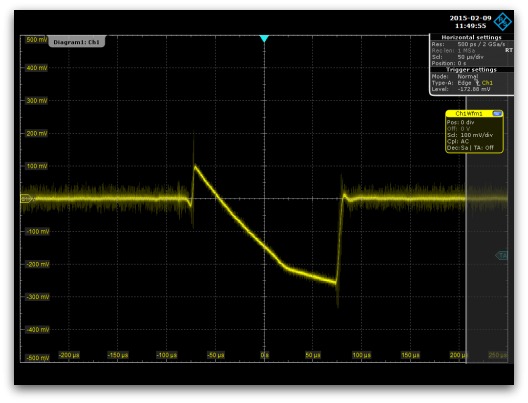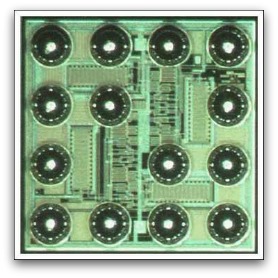 Owners of the recently released Raspberry Pi 2 – the itty bitty, budget computer – have found that the credit-card-sized systems reboot when users snap a flash photo of the units.
Owners of the recently released Raspberry Pi 2 – the itty bitty, budget computer – have found that the credit-card-sized systems reboot when users snap a flash photo of the units.
It’s the most adorable bug ever, Raspberry Pi Foundation Head of Communications Liz Upton said when she posted about the finding on Monday.
Not only is the bug harmless, it’s also packing a bonus lesson about Albert Einstein’s discovery that when light hits a component, it generates a charge, Upton says:
If you own a Raspberry Pi 2, congratulations: you’re also the proud owner of an elegant demonstration of the photoelectric effect!
Peter Onion, a veteran of Raspberry Pi forums, on Saturday posted about his discovery that the Raspberry Pi 2 is camera shy.
Onion found that when he snapped a photo of the computer with a flash, it causes an instant power-down.
The Raspberry Pi Foundation – founded in 2009 to promote the study of basic computer science in schools – took a look.
Here’s a screenshot that shows what happens when the Pi encounters intense bursts of certain types of light:

Fortunately, the Foundation found that the Pi won’t suffer any permanent effects from being flashed, Upton said.
That doesn’t make it a great idea to take lots of photos of your Pi or to interrogate it with laser pointers, though, given that the subsequent crashing or rebooting could corrupt an SD card, she said.
The Foundation also found that the fainting spells happen only under very specific circumstances: namely, given flashes of high-intensity, long-wave light, which include laser pointers and xenon flashes in cameras.
Such bursts of light affect the device that regulates the processor core power.
That’s the chip marked U16 in the silkscreening on the Pi 2, between the USB power supply and the HDMI port, which Upton says you can spot because it’s a bit shinier than the components around it.
The problem is found in a component known as the WL-CSP package: a bare silicon die with tiny blobs of solder attached.
This is a picture of the underside of a similar package, greatly magnified. Each circle is a minuscule ball of solder:

Very high-intensity light bursts “confuse” that component and cause the core voltage to drop, making the Pi a terrible prospect for an Academy Award, Upton says:
You can take your naked Pi 2 in the sunshine for a picnic or take it to a rave, and it’ll be perfectly solid. Just don’t take it on the red carpet at the Oscars. Jon is currently shining an 1800-lumen led light at a Pi 2 on his desk: not a wobble.
Upton stressed that neither sunlight, indoor lighting, nor rampaging cyclists shining their bike lights at Pis will cause this to happen, so no worries in such situations.
If you do need to use a Pi 2 where it will be flashed at, you can protect it easily enough: use a small blob of Sugru – which calls itself the “exciting self-setting rubber for fixing, modifying and improving your stuff” that bonds to almost anything and which turns into a strong, flexible silicone rubber overnight – or Blu-Tak, which is another blob-forming substance – in this case, a reusable, putty-like, pressure-sensitive adhesive.
Slap a dab of either on top of the whole component, or take a cue from the forums and use a pellet of bread.
It is, Upton notes, the “first yeasted bug fix” the Foundation has encountered.
The Foundation is investigating just what, exactly, happens when the component gets flashed with a high energy pulse from a xenon flash tube. It’s also looking at possible ways to make future production Pis immune to this issue (if possible), given that it knows how much PI users love to snap photos of them.
At any rate, Raspberry Pi creator Eben Upton told the BBC that he’s not too upset about the bug:
If this was destroying devices I would be less cheerful about it.
If I had to pick a bug in the Raspberry Pi, excessive sensitivity to paparazzi is the one I would pick.
Image of raspberry courtesy of Shutterstock.

Jack
It would be nice to know where the scope was connected. As it’s awfully noisy. If it’s long wave light, why do lasers bother it, as I was told that laser light is in the very high frequency range (I.E. short wavelength).
I would think the sun would cause since it must be brighter than a normal strobe light, yes? Maybe you are dealing with an EMF type of interference from the discharge of the strobe, since sun doesn’t seem to bother it.
JC
Lasers can have almost any frequency, but common laser pointers tend to have longer wavelengths (hence their usual red colour) as they’re easier to manufacture. In terms of intensity, sunlight is ~1kW/m^2, whereas lasers can top out at several times that (over a much smaller area).
Scott McCain
Then there are UV and IR lasers which you can’t even see with the naked eye since they fall outside the 400nm~700nm range of human vision.
Cliff Jones
Jack,
Perhaps it’s a transitional-state phenomenon. It requires the certain wavelengths, but it also seems to require very rapid (and rather dense) change from one state to the other.
It might also need a purer source of the given wavelength than is found in nature, eg sunlight is to broad a spectrum to trigger the response.
Paul Ducklin
Same way, I guess, that you can spend all afternoon in the sun (with suitable sunscreen precautions, of course – we’re safety conscious on Naked Security, so slipslopslap, folks) and find it entirely pleasant, yet if you sit in a room (even in bright daylight) where some buffoon keeps taking photos with his flash needlessly turned on and you soon want to stick the camera where…well, to be honest, where the sun don’t shine.
Scott McCain
A little research reveals that the solar cells are created by sandwiching n-type and p-type semiconductors. Perhaps an unfortunate arrangement created a part of the device which is sensitive to the photoelectric effect. The high energy flash definitely would be enough to cause a significant photoelectric effect which would most likely effect the operation of the device outside of it’s design parameters. Remember, the emission or absorption of light is usually caused by an electrical transition. An electron is traded for a photon. The laser light is odd though. It’s long wavelength so it’s energy is low (remember the frequency of light determines it’s energy since light can’t slow down or speed up – in a vacuum – usually – so the angular velocity is used to determine energy). Maybe the fact that it’s coherent (it’s laser so it’s coherent light) has something to do with it? I’m armchairing here since it’s been about a decade (or longer ahem) since my physics classes.
Phil Hergap
Lasers are available in all wavelengths, the author is assuming they are all Red (long wavelength)
jet86
No she isn’t. She never said all lasers cause it to happen.
Mike Smith
@Jack
You got it wrong, red lasers have a long wavelength.
The noise is pretty normal on digital power lines and this noise in the picture could be pickup on the scope probes from the switching power supply.
The chip seems to be affected by pulsed light, not the continuous light from the Sun. Like you, at first I though that the problem was caused by an EMF pulse, but not so apparently which is very unusual.
Anonymous
Kind of like it blinks from the flash when it gets its picture taken.
twestheimer
Are we sure this is not an April 1 story early?
Paul Ducklin
I was going to say, “Get real,” but the staff at one of my local supermarkets started wearing Santa hats last year on 01 November. So you never know these days.
Zashby
Where I am christmas shopping starts in october. So all the xmas decorations start being sold in mid august
Rob Slade
Ah, takes me back. It’s happened before, of course.
Once upon a time, in England, some Big Corporation bought a computer. The BBC wanted to make a documentary about it, and Big Corporation wanted to boast about it, so all was agreed.
TV cameramen and gear started to work in the sacred machine room.
And the computer crashed. Every time they started filming.
It took a while to sort out the issue. It wasn’t that the computer was bashful or anything.
The BBC crew brought along a photographer to record the event of them making the documentary. He used a powerful flash unit. Part of the computer was a bank of tape drives–with optical end-of-tape sensors. Every time the photog took a picture, the computer received a whole bunch of high-priority EOT interrupts–and crashed.
saxonrau
Blu-Tak conducts electricity so maybe stick to a proper coating.